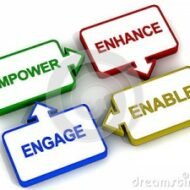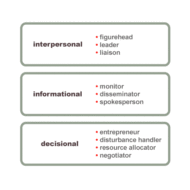Posted by Managementguru in Business Management, Decision Making, Human Resource, Labor Management, Strategy, Training & Development
on Mar 23rd, 2014 | 0 comments

INDUSTRIAL RELATIONS STRATEGY THE INDUSTRIAL DISPUTES ACT, 1947: An Act to make provision for the investigation and settlement of industrial disputes, and for certain other purposes. It is a universally accepted fact that maintaining industrial peace is of significant importance as it yields higher productivity and arrests industrial unrest. Conflicts manifest themselves in the form of strikes, poor productivity, absenteeism and attrition. These are symptoms of growing conflicts which the management has to weed out right at the start and remove the discontent amongst their employees. Relationships can always be complex or they can always be simple depending on your attitude, how you look at it. In a larger scale, definitely it is a complex phenomenon that has to be dealt with utmost care, as feelings and emotions take lead during problem situations and logic and discipline are conveniently forgotten. Employee Participation: Employee participation is the only way to promote industrial democracy and peace. In course of time it becomes a business strategy and takes the shape of self-management when the pressure of management is eased out to a larger extent. Always remember that the confidence on your workers proves to be the key that opens the door of trust and reciprocation. Workers also understand the storm and turbulence that the management experiences in terms of finance and selling. Proper Training: Proper training given to the heads of various departments in terms of attitude, language, behavior, presence of mind and employee motivation helps the management to avoid unnecessary conflicts. Training given to the union leaders of various capacities on the other hand boosts up their confidence and make them feel as “one” with the management. Social relations are always not to be taken for granted as it determines your integrity and success in the business society. Some golden rules or strategies to make your working smooth and avoid conflicts and strikes. (Works out for both sides) Put yourself in other man’s shoe to know or understand why the other side has taken that particular “stand” or position and many a time we come to know it is only due to misguided apprehensions, mistaken beliefs or just fear of change that is an inherent quality in humans. They resist change as it is simply their habit. The negotiator who represents your side should be agreeable, affable and he should be able to project your ideas and claims in a proper manner and also he should protect your interest. See to it that he doesn’t fall bait to some attractive offers from the other side. Approach the problems with an “open mind”; don’t give space for rumors and gossips. Let the conversation between you and your opponents (not enemies) be fair and square and straight forward. Also don’t try to beat around the bush as it is a colossal waste of useful time and energy and of course your hard earned money. Consider union as a partner and not a “necessary evil”. You have to “work-with” and “live-with” them. In fact smooth relations make work easier and concern for the welfare and security of your employees make them come closer to you and contribute more in terms of productivity. Identify the anchor persons who can be dealt “in person” to make things easy for both sides and find out what their very idea of negotiation is, to finish the deal with minimum effort. The management must create a sense of belongingness in the minds of employees. Survival and success of an organization depends solely on the very survival and success of their workers who believe that work is...

Posted by Managementguru in Business Management, Entrepreneurship, Human Resource, Leadership, Principles of Management
on Mar 13th, 2014 | 0 comments

Research on Managerial Roles by Henry Mintzberg and Peter Drucker Henry Mintzberg, the canadian academic observed a few managers and analysed their behaviors and arrived at some conclusions which are listed in the table below. He also identified and attributed ten managerial roles of significance in correlation with the managerial functions. S.NoManagement Functions% of time spent1.Relating to external environment1.82.Planning and setting Objectives19.53.Decision-making6.04.Organising15.05.Leadership and inter-personal role28.46.Communication12.67.Control12.78.Staffing4.1 This table very clearly explains the role of a manager as a leader and the extent of influence he exerts on his sub-ordinates. Proper planning and goal-setting are the key contributors for the successful functioning of a firm. LEADER VS. MANAGER Coming to the managerial roles they can be classified as, 1. Interpersonal roles 2. Informational roles 3. Decisional roles Inter-Personal Roles: Figurehead role– The function is more of a ceremonial nature, like attending the family functions of employees, greeting visitors and a manager performs the symbolic duties of a head of the organization.Leader– He has to plan the HR requirements and motivates the staff to perform well. “Managers are people who do things right; leaders are people who do the right thing.” Remember a manager has to be a leader whereas it is not so in the case of a leader.Liaison– The manager acts as a link between the organization and the external environment to build image and rapport. Informational Roles: Monitor– The manager has to update himself with the current scenario in order to utilize the information for organizing and prompt decision-making.Disseminator– The manager has to communicate and distribute information to his subordinates to effectively accomplish the enterprise objectives.Spokesperson– Efficiently has to communicate the company’s policies to prospective clients and others. Decisional Roles: Entrepreneur– He has to be innovative by adapting to the changes in the environment. He has to be adventurous, persistent and strategic during tough times.Disturbance handler– He has to find appropriate solutions to problemsResource allocator– He has to apportion and allocate resources properly besides delegating authority to the work forceNegotiator– He has to negotiate resources outside and conflicts inside the organization. MANAGERIAL DIMENSIONS Managing: Science or Art? One perspective is Managing, like all other disciplines- whether medicine, music composing or even cricket is an art. It is “know-how.” Still managers can use the organized knowledge about management to perform better. So let us put it this way, Managing as practice is an art; the organized knowledge underlying the practice may be referred to as a science. Let them be complementary to each other and be present in peaceful co-existence. Drucker “ON MANAGERIAL FUNCTIONS ” – A manager has to look after The specific purpose and mission of a firmIncrease productivity by making the employees more productiveConsiderate about social impacts and social responsibilities In his view, the areas a manager has to focus and concentrate are 1. Market standing 2. Innovation 3. Productivity 4. Financial and Physical resources 5. Profitability 6. Manager performance and development 7. Worker performance and attitude 8. Public responsibility He says that business has only two functions- marketing and innovation. While others were concentrating on products and commodities, he concentrated on people and their performance. His “management by objectives- MBO ” became a very popular concept though it faced criticism. MBO according to Drucker is a philosophy that rests on a concept of human action, behaviour and motivation. It sets personal goals (both shortterm and longterm) to be achieved by each individual working for the organization and coverts them into challenges to be accomplished, thus motivating the individuals. The Effective Manager The effective manager is a situational manager who evaluates each approach in the light of circumstances and selects the one that most effectively and efficiently achieve individual...




